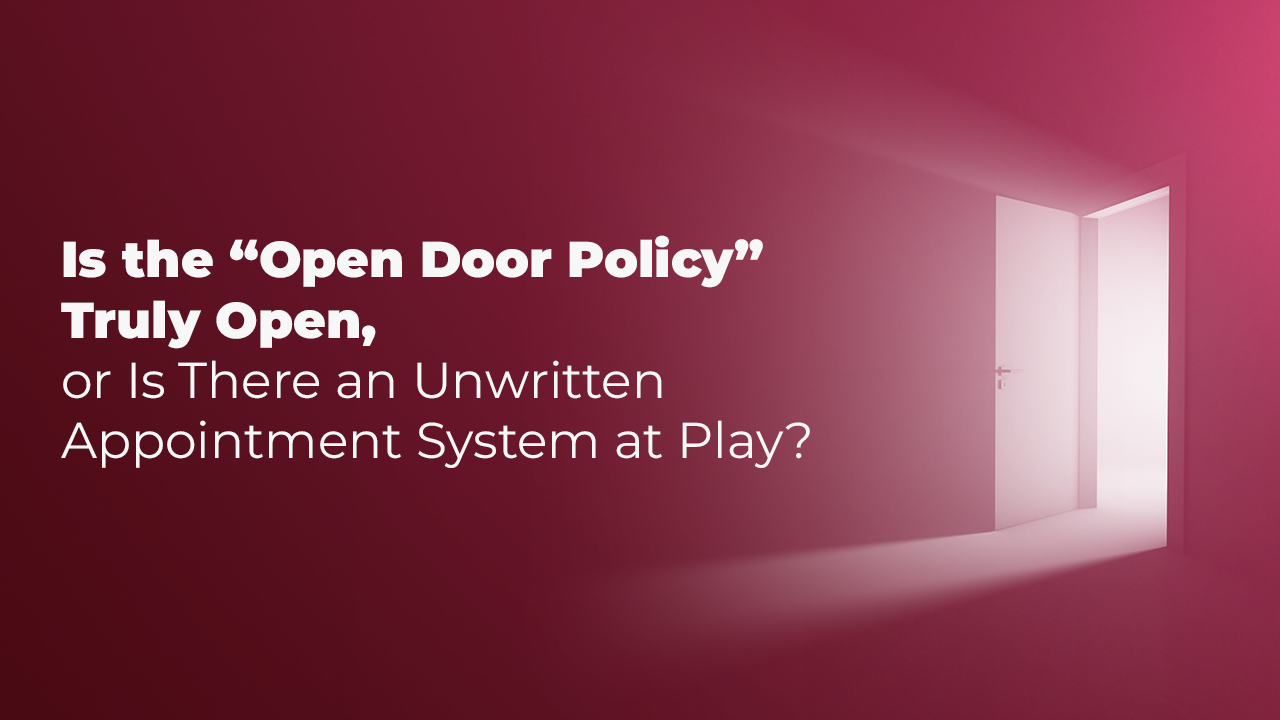
Is the “Open Door Policy” Truly Open, or Is There an Unwritten Appointment System at Play?
The door may be open—but what if there’s a meeting inside?
The concept of the “Open Door Policy,” frequently referenced in corporate environments, sounds incredibly inviting: “Our door is always open—feel free to share your thoughts, concerns, or ideas.” For employees, it represents an ideal workplace culture where voices are heard and individuals feel valued. However, in practice, an open door is sometimes just that—physically open, while the realities behind it are far more complex.
Managers are often consumed with back-to-back meetings, urgent tasks, and a flood of emails. In such a setting, the “open door” can quickly turn into an implicit message: “Yes, the door is open, but you need an appointment.” Meanwhile, employees may hesitate—either not wanting to interrupt or walking away when they see a meeting in progress. The result? The door is technically open, but the communication bridge remains incomplete.
What Is an Open Door Policy—And What Should It Be?
At its core, an open door policy is designed to prevent hierarchy from becoming a barrier in employee-manager relationships. It aims to foster transparent and approachable communication. The goal isn’t merely to keep the door physically open but to ensure employees genuinely feel welcome, heard, and supported. That can only happen through authenticity, intentional time allocation, and empathetic leadership—beyond just the symbolic gesture of an open door.
Why Is the Open Door Policy Difficult in Practice?
Given the fast pace of corporate life, it’s unrealistic to expect managers to speak with every person who walks in without disrupting their workflow. On the other hand, employees often postpone sharing ideas or concerns while wondering, “Is now a good time?” In short, the door is open, but there’s an invisible “appointment system” in place—one that can stall or stifle meaningful communication.
How to Keep the Door Truly Open
- See Appointments as a Tool, Not a Barrier: Scheduling time shouldn’t limit access—it should optimize it. When used properly, appointments create space for focused, respectful, and effective dialogue.
- Encourage Quick and Informal Check-ins: A brief “How are things?” at the doorway or a casual conversation in passing can go a long way in reinforcing the open-door spirit.
- Use Alternative Communication Channels: When a physical door isn’t accessible, maintain open communication via email, messaging platforms, or regular one-on-one meetings.
- Build a Culture of Trust: Employees must feel psychologically safe to speak openly. Establishing a culture of mutual respect and psychological safety is essential for a truly accessible environment—not just physically, but emotionally and communicatively.
Why Does True Accessibility Matter?
When employees feel they can approach their leaders freely, issues are identified early, misunderstandings are avoided, and motivation increases. Hierarchical walls begin to dissolve, giving way to stronger team cohesion, a sense of belonging, and mutual trust. The organization evolves—not just as a functioning system—but as a dynamic space for learning, growth, and innovation.
The Door Should Be Open—and So Should the Person Behind It
An Open Door Policy is more than just a corporate slogan—it’s a culture of transparency, accessibility, and trust. The door must not only be physically open but also symbolically open—through the presence, attention, and willingness of the leader behind it.
Appointments shouldn’t feel like waiting at the threshold; they should be an intentional path inward. When employees feel genuinely heard and valued, corporate culture is built on a strong foundation.
Ultimately, an open door becomes more than a policy—it becomes a gateway to meaningful conversation, collaboration, and collective progress. Every voice that steps through that door becomes a guiding light for the organization’s future. And only then is the door truly open—not just in form, but in heart and mind.
accessible management, communication barriers, corporate culture, effective communication, employee motivation, feedback culture, leadership, manager-employee communication, Open Door Policy, reduction of hierarchy, transparency, trust in the workplace, workplace communication